#wieliczka salt mine
Explore tagged Tumblr posts
Video
The Kaplica Entrance by Henrik Sundholm Via Flickr: I visited the Wieliczka Salt Mine during my stay in Kraków, Poland. This opening was seen during the tour.
#Wieliczka#Salt#Mine#Wieliczka Salt Mine#underground#entrance#exit#opening#lights#lamps#shadows#walls#curtains#kaplica#antoniego#reliefs#krakow#poland#flickr
2 notes
·
View notes
Text
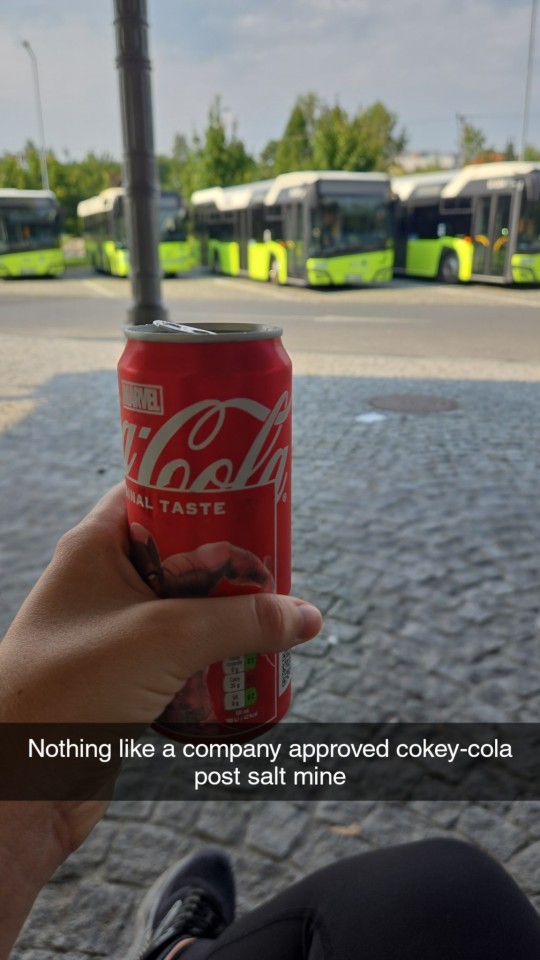
I've escaped via mineshaft
5 notes
·
View notes
Text

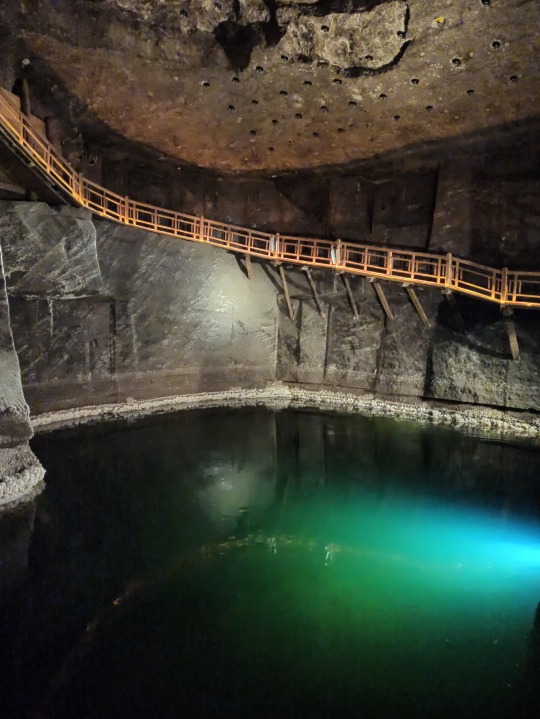
8 notes
·
View notes
Photo
I WANT TO GO THERE GIMME PLS OMG







The Wieliczka Salt Mine is located in Poland. The mine was built in the 13th century, produced table salt continuously until 2007, as one of the world's oldest salt mines still in operation. The mine’s attractions include dozens of statues and four chapels that have been carved out of the rock salt by the miners. About 1.2 million people visit the Wieliczka Salt Mine annually
36K notes
·
View notes
Text
St. Kinga's Chapel, Wieliczka Salt Mine, Krakow Poland
Hand carved out of a 700 year old salt mine
#Krakow poland#Wieliczka Salt Mine#Catholic church#JTEM#guided tour#Yes you can rent it#for your wedding#There is even a banquet room#Not as ornate though
0 notes
Text

“Miniere Wieliczka, una città sotterranea fatta di sale vicino Cracovia”
Lampadari di cristallo in saloni da ballo e cattedrali, cappelle con altari, statue ovunque e labirintidi cunicoli.
Tutto fatto di sale.
L’acqua nella regione di Wieliczka è sempre stata salata. La storia e la geologia ci raccontano che 14 milioni di anni fa a Cracovia ci fosse il mare. Questa è una delle miniere più antiche al mondo e rimase in funzione per più di 700 anni.
20 notes
·
View notes
Text
Wieliczka Salt Mine Poland
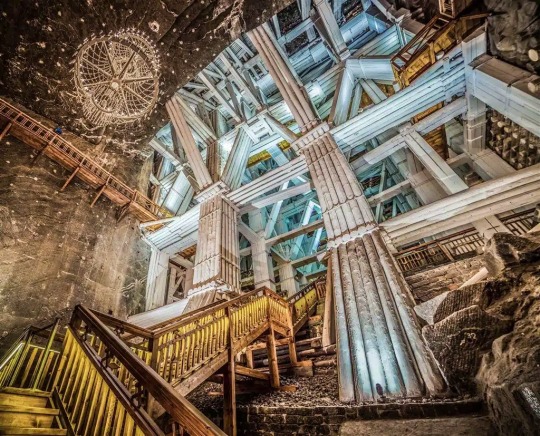
View On WordPress
#Chapel of St. Kinga#Hotel Grand Sal Wieliczka#Kinga Wife of Kraków monarch Boleslaus the Modest#Kraków Monarch Boleslaus the Modest#Neolithic Period#Polish Town of Wieliczka#Rock Salt#Salt Mine Microclimate#Subterranean Chambers Wieliczka Salt Mine#UNESCO World Cultural and Natural Heritage Site#Wessel Lake Chamber#Wieliczka Salt Mine (Kopalnia Soli)#Wieliczka Salt Mine Miners’ Route#Wieliczka Salt Mine Tourist Route#Wieliczka&039; Salt Mine Health Resort
2 notes
·
View notes
Photo
I was lucky enough to see this place! Truly outstanding and beyond beautiful.


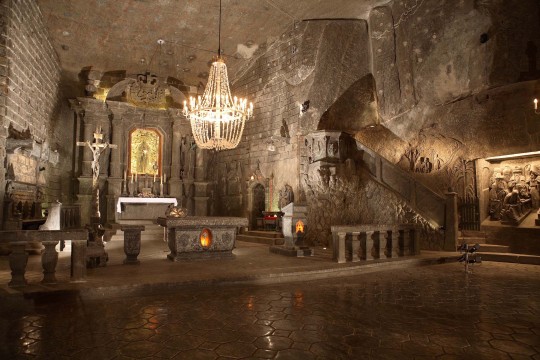
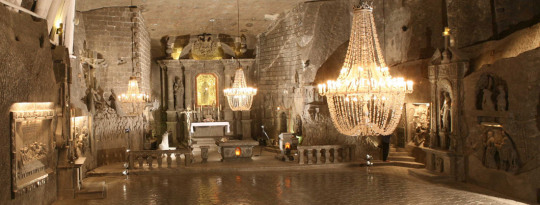
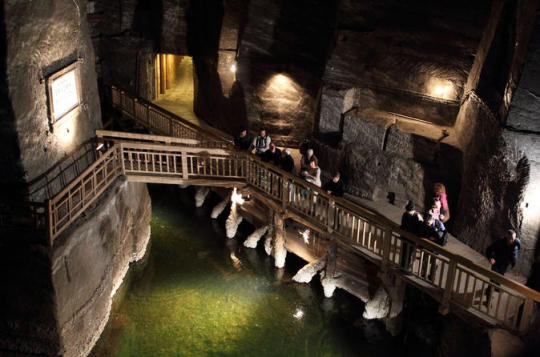
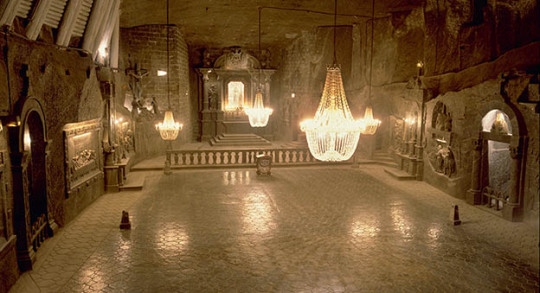



Wieliczka salt mine, Poland
In southern Poland, Lake Wessel lies inky and unmoving in the deep. Filling the bottom of an old salt mine, it’s just one component of the UNESCO World Heritage Site which has been a functioning mine since the 13th century. Featuring supreme carpentry, centuries-old brickwork and ornate salt-crystal chandeliers in cavernous dining rooms, this fantastical setting is a favorite for the Polish film industry. The mine’s attractions include dozens of statues and four chapels carved out of the rock salt by the miners. The older sculptures have been supplemented with new carvings made by contemporary artists. About 1.2 million people visit the Wieliczka Salt Mine annually.
(Source, source)
36K notes
·
View notes
Text
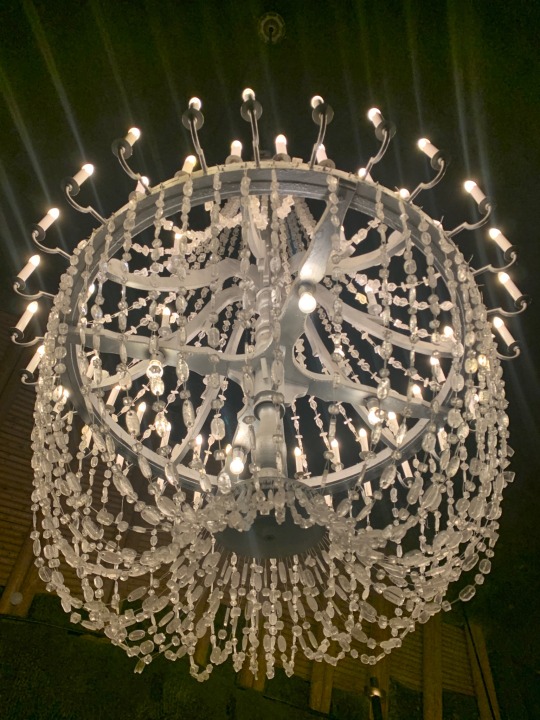
Salt chandelier from Wieliczka in Krakow, Poland
5 notes
·
View notes
Text
Stuff I learned June 3-23
so I fell asleep earlier after posting about my scrushy crawlnut migraine times, and woke up a lil bit ago, still migrainily.
I took some Advil, Tylenol, water, and now I can tell you guys about the day I had. (Might be a contributing factor to a hurty brain. i took in a lot of information.)
Under the cut: what I learned today about the uses of kudzu (it evolved to be used plentifully by humans, which is why it grows so quickly and abundantly!), plastic upcycling, and the Wieliczka Salt Mine in Poland.
I learned a great deal about the uses of kudzu, in the process of educating a friend about it. Kudzu has been used as a form of erosion control and to enhance the soil. As a legume, it increases the nitrogen in the soil by a symbiotic relationship with nitrogen-fixing bacteria. It’s used in many food dishes, including as a jelly from the flowers (which apparently tastes like grape jelly), a starch, and a tea. The starch is flavoured as a summer drink in Vietnam, and used as a thickener like cornstarch. Nearby bee colonies may forage on kudzu nectar during droughts as a last resort, producing a low-viscosity red or purple honey that tastes of grape jelly or bubblegum. (I want to try this so bad!) It’s used in traditional medicines, and has a lot of food nutrition. It’s used as a fibre for baskets. Clothing, and paper usage. Soap, lotions, and ethanol. It’s super duper useful. This was before I even got to work, I learned all this knowledge.
At work, a coworker rushed out of the donation centre to show us a book about the tour at the the Wieliczka Salt Mine in the town of Wieliczka, near Kraków in southern Poland. Holy heck you guys! The sculptures! The art carved directly into salt! The history! Never in my dreams would I have imagined that humans had created this as a thing, without being shown. I did not take photos of the book, but I will add them tomorrow when I’m back at work. There’s a historical tour of how the first miners mined the salt, the tools and structures for support they had, there’s a green lake! :D
THEN, there are the carvings and the grand halls and the tunnels. Finally, the WAYS that the salt erupts from the walls and surfaces: in stalactites, stalagmites, King’s Hair curls, crystals, and amazingly geometric shapes. When you think “salt mine”, most people think of the salt deserts in the US (or at least, the three customers in the store that I pestered to look at the book all said this.)
ADDITIONALLY, today I talked with a customer who comes in every weekend about cleaning up plastics from the Great Lakes. He’s a photographer, and doing a work right now based on that, so we discussed the uses of plastics as recycled/upcycled products, which I’d watched multiple videos on last night and in the morning. Brothers Make, a southern UK based business run by brothers Jonny and Matt, gather plastic trash from the beaches (and have it collected by friends and family) and turn it into furniture, jewelry, and useful tools.
“In 1950, 2.5 billion people produced 1.5 million tonnes of plastic. In 2016, 7 billion people produced over 320 million tonnes of plastic.
- sas.org.uk (2020)“
Their YouTube channel has a ton of videos on the things they’ve made along with the fascinating process of cleaning, shredding, melting and molding plastic, along with how you can do it at home!
2 notes
·
View notes
Video
St. Kinga's Chapel by Henrik Sundholm Via Flickr: I visited the Wieliczka Salt Mine during my stay in Kraków, Poland. This is obviously the most awesome part of it, with giant chandeliers hanging from the ceiling.
#Wieliczka#Salt Mine#mine#underground#steps#stairs#railing#krakow#poland#hdr#people#tourists#tourism#chandeliers#chandelier#lamps#lights#kinga's chapel#chapel#ropes#sculptures#reliefs#reflections#shadows#flickr
0 notes
Text
Wieliczka & Bochnia Royal Salt Mines
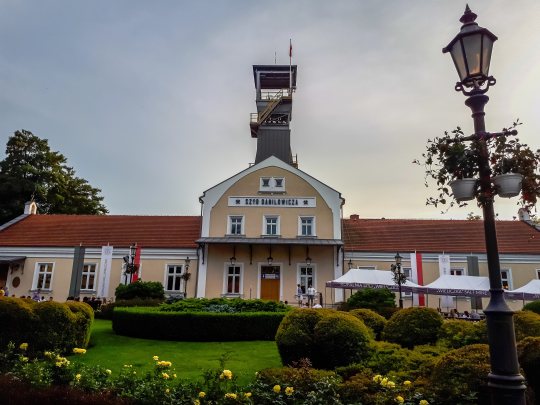
Today, let's embark on a virtual journey through the UNESCO World Heritage Sites of the Wieliczka and Bochnia Royal Salt Mines in Poland. Join me as we delve into the depths of these remarkable underground landscapes.
Begin your subterranean adventure in the Wieliczka Salt Mine, a labyrinth of tunnels and chambers that has been in operation for over 700 years. Descend into the mine's depths and witness the extraordinary beauty carved out of salt by generations of miners.
Marvel at St. Kinga's Chapel, an underground marvel carved entirely from salt. The intricate sculptures, chandeliers, and altarpieces create a breathtaking subterranean cathedral that testifies to the miners' craftsmanship.
Discover the enchanting Underground Lake, a subterranean body of water that adds an ethereal touch to the Wieliczka Salt Mine. The reflections of the salt formations on the water's surface create a mesmerizing scene.
Journey to the Bochnia Salt Mine, one of the oldest salt mines in the world, with a history dating back to the 13th century. Explore its network of chambers, including the iconic and massive Chamber of King Casimir the Great.
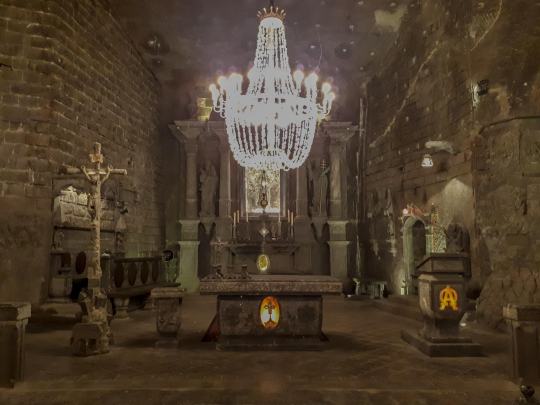
Traverse the vast underground chambers in both mines, each telling a story of the challenges and triumphs of salt mining. The sheer scale of the excavations and the intricate details carved into the salt rock showcase the ingenuity of the miners.
Admire the salt sculptures that adorn the mines, from whimsical characters to intricate reliefs. These salt-carved artworks not only showcase the artistic talents of the miners but also add a unique aesthetic to the subterranean environment.
Both the Wieliczka and Bochnia Royal Salt Mines earned their UNESCO World Heritage status in 1978, recognizing the historical, cultural, and technological significance of these underground marvels. They stand as a testament to the importance of salt in European history.
Beyond their historical and cultural significance, the salt mines are believed to have therapeutic benefits. The microclimate within the mines, rich in salt particles, is said to have positive effects on respiratory health.
In conclusion, the Wieliczka and Bochnia Royal Salt Mines invite us to venture beneath the surface and witness the legacy of centuries of salt mining. As UNESCO World Heritage Sites, they beckon us to appreciate the cultural and technological achievements of the miners who carved these subterranean wonders. When you're ready to explore a world where history is etched in salt, these mines promise to inspire and captivate. 🏰⛏️🌟
#poland#salt#mines#royal#europe#travel#unesco#world heritage#historical#marvels#subterranean#adventure#wieliczka#bochnia
1 note
·
View note
Note

Wieliczka Salt Mine, Małopolska, Poland
68 notes
·
View notes
Text





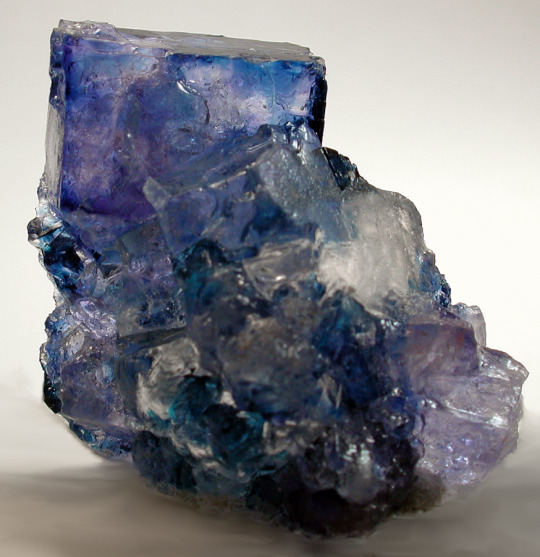

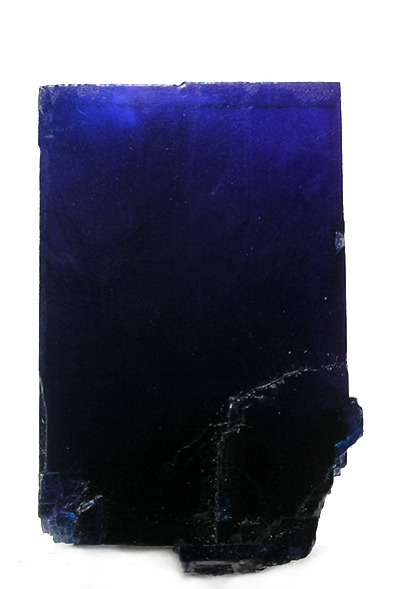
Halite (salt)
Wieliczka salt mine, Poland, photo by Grzegorz Bijak
Skeletal halite, Poland, Spirifer Minerals
Searles Lake, California, photo by Rob Lavinsky
Lubin, Poland, photo by Rob Lavinsky
Wieliczka salt mine, Poland, photo by Rob Lavinsky
Carlsbad potash district, New Mexico, USA, photo by Kelly Nash
PCA Mine, New Mexico, USA, photo by Michael C. Roarke
Saskatchewan, Canada, photo by Rob Lavinksy
374 notes
·
View notes
Photo
Wieliczka is seriously the coolest place ever.
Over 700 years old, you can see the very tip of this miner's iceberg when visiting Krakow. That church you see there was hand-carved by the miners to give themselves a place of worship deep underground. Other features include a carving of The Last Supper that almost looks three dimensional and a salt statue of Pope John Paul II.
I haven't been in almost a decade and it's definitely about time to see it again with new friends
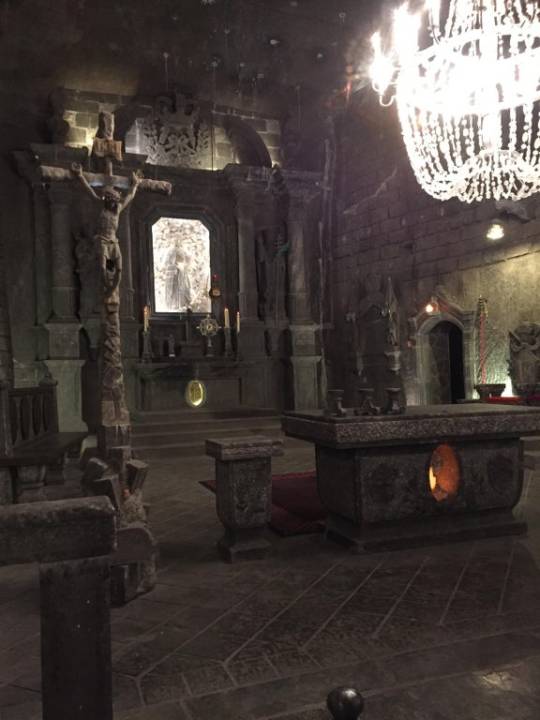
Church in a Polish salt mine 300 feet underground
6K notes
·
View notes
Text
Wieliczka Salt Mine would make a great backdrop for a Buried TMA episode
16 notes
·
View notes